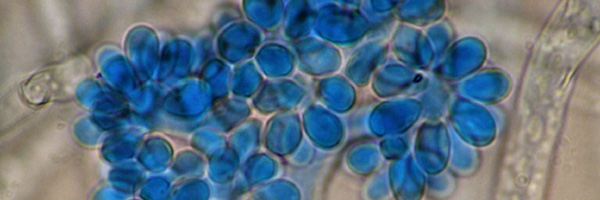
Botrytis cinerea Pers (1794)
Gray mold
- classification : Fungi, Ascomycota, Leotiomycetes, Leotiomycetidae, Helotiales, Sclerotiniaceae
- téléomorphe : Botryotinia
- English name: gray mold
This fungus, ubiquitous and very polyphagous, is observed on Cucurbitaceae in practically all its production zones in the world , where it can be the source of occasional significant damage. If it is rife in the open as well as in shelters, it is particularly feared in the latter context, in particular on cucumber, and to a lesser extent on melon and zucchini.
The biological variability of B. cinerea is still poorly understood . It should be noted that strains resistant to several fungicides have been reported in many countries.
Rather recent molecular biology work has revealed great genetic variability within the species B. cinerea . This fungus is in fact a complex of species that can be divided into two groups. The group I or " subpopulation pseudo cinerea " is distinguished by its resistance to the fungicide fenhexamid and has one of the two alleles of the gene " Bc hch " vegetative incompatibility. The Group II consists of the stem vacuma and transposed . The transposa subpopulation has two active transposons in its genome, Boty and Flipper whereas these two transposons are absent or inactive in the vacuma subpopulations and pseudo-cinerea .





